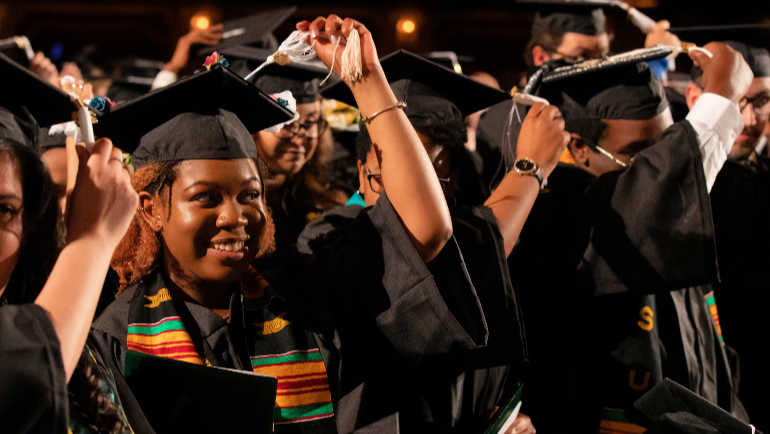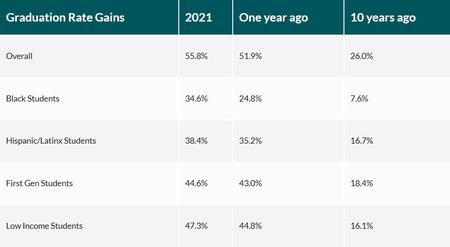Wayne State Graduation Rates Improve But Black And Latino Students Still Lag
University President M. Roy Wilson wonders how the pandemic will setback graduation gains for minority students.

Wayne State University’s recently-released six-year graduation rates show significant improvements over the last year and the last decade. Despite overall improvements, the majority of Black and Latino students don’t graduate within six years.
In 2011, Wayne State’s overall six-year graduation rate was just 26%. In 2020, it was 52% and it improved to 56% in 2021.
The Latino population’s graduation rate went from 17% in 2011, to 35% last year and 38% this year. Black students have seen the most significant gains. In 2011, only 8% of Black pupils graduated in six years. That number improved to 25% last year and 35% this year.
Wayne State University Undergraduate Student Six-Year Graduation Rates

Wayne State President Dr. M. Roy Wilson says the main reason for the improvement in graduation rates is that the university has been focused on the issue, “making sure that our orientation to students was that we wanted them all to graduate and we were going to do everything we could to help them.”
Wilson says the effort has been multi-pronged and included the university increasing the amount of money a student would need to owe to be blocked from registering for classes. It also revised General Education requirements and began offering summer programs to help some students prepare to enter college.
The changes seem to be paying off. In 2018, the Association of Public Land-grant Universities (APLU) gave Wayne State an award for having the best graduation rate improvements in the country.
Still, most Black and Latino students don’t graduate within six years. President Wilson recognizes there’s a lot of work to do.
“There’s room for improvement,” he says.
Wayne State isn’t the only university working to improve graduation rates for minority students. In 2019, Black undergraduates across the nation were 24 percentage points less likely to graduate within six years than white students. That year, the APLU selected Wayne State to lead a group of 11 urban institutions to hopefully close the gap by 2035. Wilson says while Wayne State is leading the effort, the university has set a more aggressive goal for itself; it wants racial groups to graduate at the same rate by 2030.
But President Wilson is worried, now, about how the pandemic might be impacting that goal.
“It has had a differential effect on minority populations with online learning,” says Wilson. “Minority students don’t have access to the same kind of resources online as majority students. That means access to the Internet, hardware, an environment conducive to study and all those kinds of things.”
Wilson says Wayne State had the largest freshman class in its history last fall. Many of those students, however, didn’t return in the winter. The students who didn’t come back were disproportionately Black and Latino.
Trusted, accurate, up-to-date.
WDET strives to make our journalism accessible to everyone. As a public media institution, we maintain our journalistic integrity through independent support from readers like you. If you value WDET as your source of news, music and conversation, please make a gift today.
